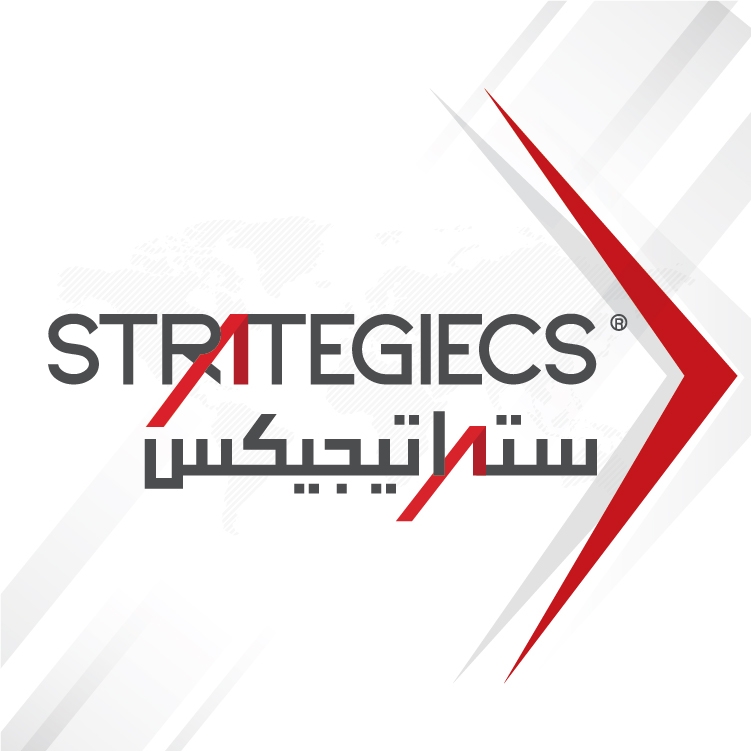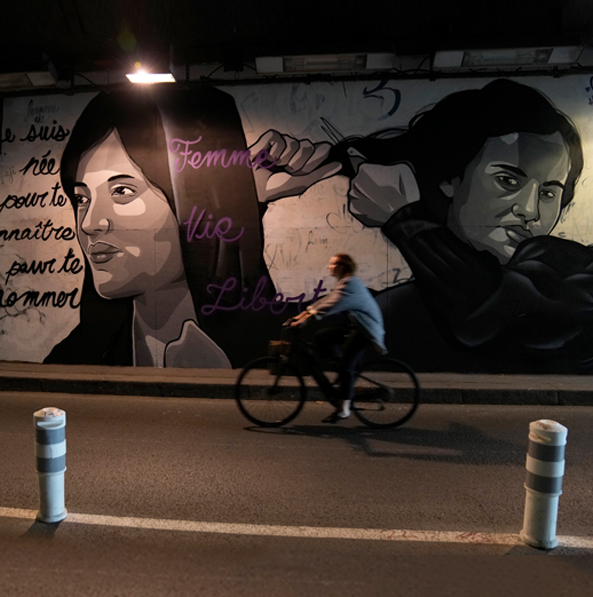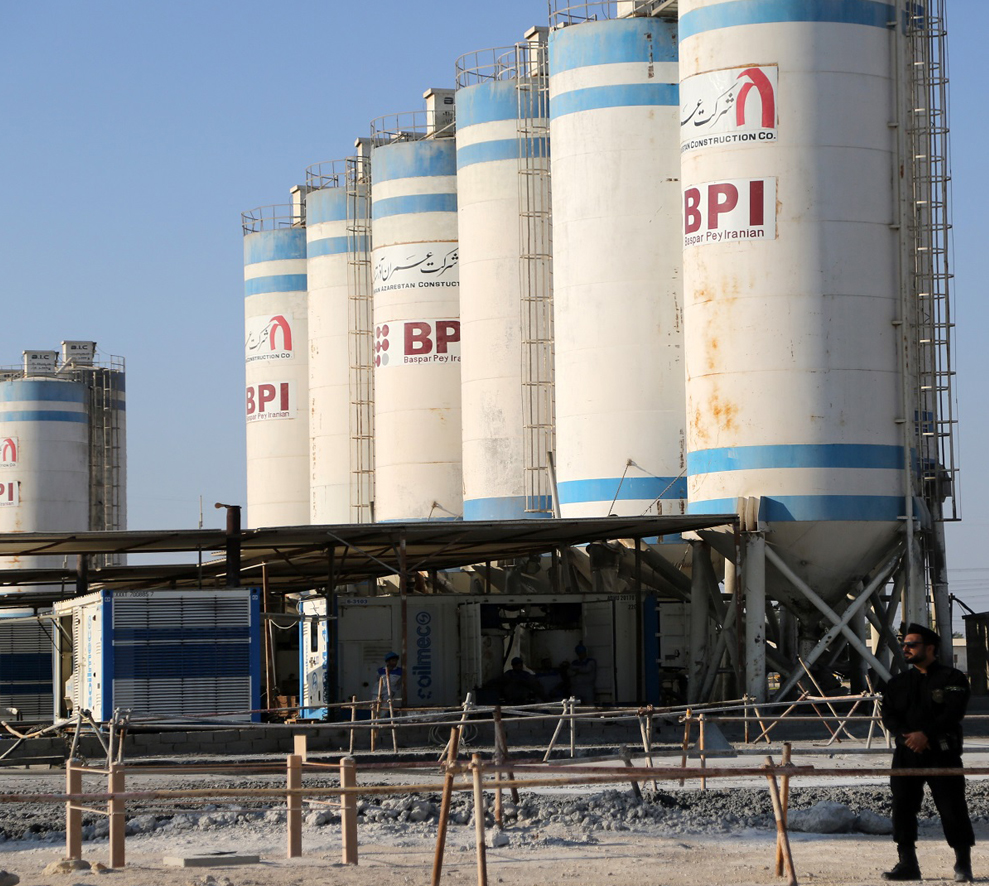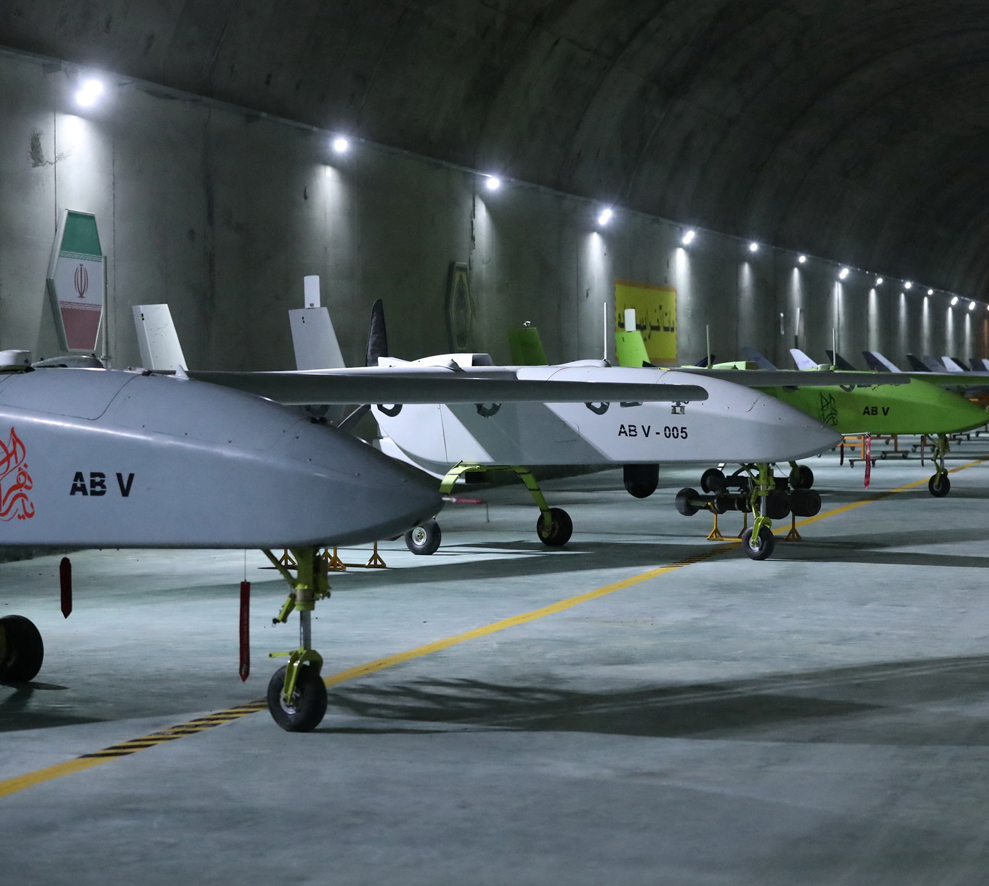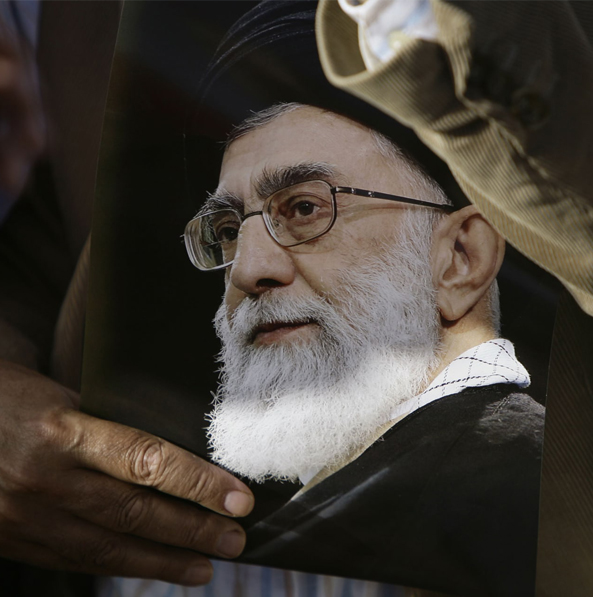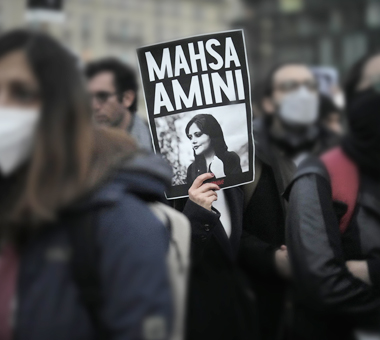Since mid-September 2022, Iran has witnessed widespread protests following the death of a young woman of Kurdish origin, Mahsa Amini, while she was in detention at a morality police security center for violating the dress code.
Since the establishment of the Islamic Republic of Iran in 1979, the religious authority has gradually enacted legislation regulating the limits of permissible women’s freedoms. With each new restriction, protests and unrest erupted due to political and economic factors—and women’s rights and freedom were considered as only a front.
- In March 1979, the first of these restrictions mandated that women must wear a hijab at workplaces, which was rejected by thousands of feminists and freedom advocates.
- In 1981, the restriction expanded to include mandating girls and women to wear modest Islamic clothes—without the law specifying what these clothes are. This allowed a margin of flexibility and leniency in applying the law, but it also empowered authorities to arrest women for supposed violations that were not a “crime,” such as wearing an uncovered shoe.
With the outbreak of the 2022 protests, many observers expected the protests to be temporary since the issue behind such protests is narrow, does not suit the nature and identity of the Conservative Iranian society, and does not favor the non-compliance with customs and norms in public. Yet the protests are still raging, with their scope exceeding previous protest tides, such as those that occurred in 2017, 2019, and 2021. Today’s protests extend over a geographical scale that includes more than 83 cities, compared to 31 cities in the 2019 protests.
The most indicative factor on the breadth of the current protest is its duration: from mid-September until the time of this paper’s publication in early December 2022. The previous tides of protests tended to last for one month; some of them even subsided in their first week.
What distinguishes these protests are the simultaneous domestic and foreign conditions that played a role in their continuity and increased the ambiguity of the upcoming scene in Iran, including the following.
First: The Accumulation of Crises Affecting the Legitimacy of the Regime
A recent article in The New Yorker about the recent protests argued that Iran has three remaining ideological pillars: Death to Israel, Death to America, and the Hijab. Therefore, the issue of the hijab is not only related to women’s freedom, but it has become an icon of the political alignment between the two main movements in Iran: Conservative and Reformist.
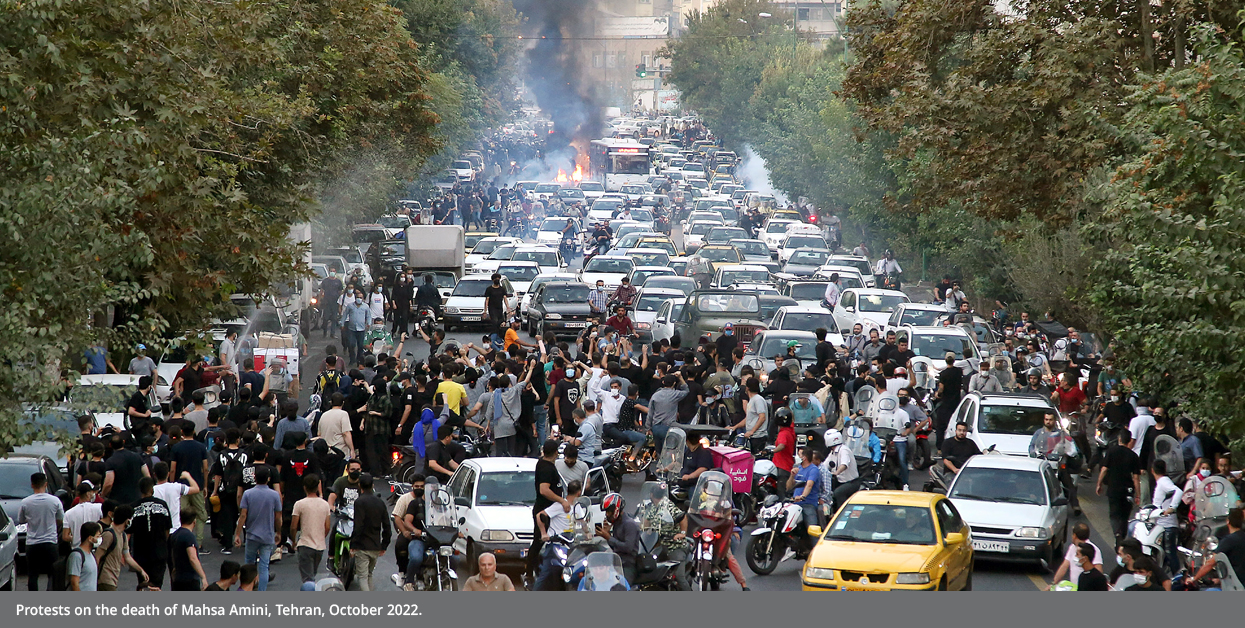
As the protests expand even in Shiite Persian nationalist areas, they demonstrate the spread of secularism, rejection of theocratic rule, and the quest of a large percentage of the population, especially young people, to break free from the religious-cultural framework that Iran’s official and religious institutions are trying to impose.
The 2017 protests embodied the crisis of legitimacy in the Iranian political system and the decline in accepting its narrative under the slogan “Withdraw from Syria and Think about Us.” Meanwhile, the ideological system is propagating that some non-Iranian states in the region, whether directly or indirectly, are behind such protests and that a wide percentage of people protested due to the foreign policy increasing their costs of living, not to mention the crises such policy created.
Prior to the outbreak of the recent protests, Iranian official and semi-official bodies were alerted to what can be described as the accumulative effect of the policies followed. An academic research paper published in the quarterly scientific journal of strategic research of Allameth Tabataba’i University, warned that the continuation of the current situation will lead to the recurrence of protests that “need only one spark to make protesters, with multiple and diverse visions and goals, take to the streets.”
The semi-official Iranian Students’ News Agency republished the research paper at the height of the 2022 protests: “If the authorities do not respond to the demands of the people, and ignore the main causes of the protests, future tides of protests will not remain at their previous levels.”
The protests were fires set by what is now known as the “Mahsa spark,” which unified all diversities and contradictions among the classes ideologically opposing the authority. As the previous research warned, the protest tide was unprecedented, as evidenced by its time duration, geographical scope, and large percentage of popular support. The head of the Iranian Supreme Leader’s representative body in universities, Mostafa Rostami, said that about 55 percent of Iranians support these protests.
This percentage might be even much higher if there were neutral tools to measure public opinion in Iran, especially among the younger generation who are not convinced compared to older people by the doctrine of Wilayat al-Faqih that advocates a guardianship-based political system that relies upon a just and capable jurist (faqih) to assume the leadership of the government in the absence of an infallible imam or religious leader.
Second: Deepening the Economic Crisis and Impoverishing the Middle Class
Unlike previous protests, which remained factional with no homogeneity between economic demands and political goals, Iranian experts believe that the pressures imposed on the middle class by U.S. sanctions and exacerbated by the Covid-19 crisis coupled with the consequent increase in the prices of basic commodities caused by the Ukrainian crisis have created a central point around which protesters of all sectors meet.. Therefore, the participation of the middle class in the protest was the decisive factor for understanding its continuity and geographic expansion.
Iran has high inflation rates in food prices, which, according to the latest World Bank reports, reached 84 percent, the third-highest rates in the world. This rate may have been possible had it not been for the fact that inflation is high compared to 2017, prior to the imposition of Maximum Sanctions, which in turn affected the Iranian currency, pushing the toman into historic declines against the U.S dollar.
Thus, the various motives to protest have combined to include all movements protesting their living conditions, as well as those who have lost their jobs and savings since 2018. Although the protests by the middle class have been predominantly peaceful, they tend as a group to sustainably rebel when there is a class decline towards poverty.
The deteriorating economic situation for middle-class Iranians has been exacerbated by a scarcity of essential services such as energy and water. Although Iran has a vast reserves of oil and gas, their increased selling price since 2019 has not had a positive impact on the average household, which helped fueled protests from the middle class. Additionally, inadequate infrastructure has hindered the utilization of Iran’s large gas reservoirs for electricity, resulting in further hardships.
Iran’s water crisis is severe and also poses a significant threat, particularly to densely populated cities such as Tehran. Many cities are approaching a state of “water bankruptcy” in which water supplies being severely limited or cut off entirely.
The water crisis in Iran is severe and poses a significant threat, particularly to densely populated cities such as the capital. Many cities are approaching a state of “water bankruptcy,” with water supply being severely limited or cut off entirely. In November 2022, the CEO of the Tehran Water and Wastewater Company of Iran issued a warning that the capital has a mere 100-day reserve of water.
Tehran is also affected by climate change in terms of rural-urban migration. Since agriculture could not support families, it increased the pressure on limited services as well as unemployment. Sub-rivers and lakes in all of Iran’s provinces have been subject to a decline in water levels. Lake Urmia, for instance, the largest lake in the Middle East and located northwest of Iran, is close to a complete drought, which threatens security and has societal repercussions in that agricultural area.
Third: Political Centers of Weight and the Succession of the Supreme Leader
The entire political class is subject to the institution of Supreme Leader Ali Khamenei and his directives, taking into account the existence of formal and fundamental differences in the means of governing and the implementation of the supreme strategy of the state, which is determined by Khamenei and the Supreme National Security Council.
These differences are limited to two main movements, the hardline Conservative and the Civil Reformist, that take turns assuming public positions (except for those related to security and defense) due to their close relationship with the institution of the supreme leader and the Conservative movement.
The Reformists’ sense that state institutions favor Conservatives in the power-sharing quota, the matter that led to a latent discontent indirectly expressed depending on the circumstances. Because Iranian President Ebrahim Raisi, elected a year ago, belongs to the Revolutionary Conservative wing, the Reformists do not depend on their popular weight to contain the protests. A kind of identification between the Reformists and the protests can be seen through the statements of their leaders and media that cover the protests with a neutral perspective. The Conservative media, meanwhile, accuses the protesters of conspiracy and implementing foreign agendas since the Reformist movement usually presses for the expansion of civil liberties and the reduction of political and societal militancy.
The limited amount of freedom granted to the Reformist movement does not indicate that Reformists are leading the protests. In fact, they are without a clear leadership, not to mention that Reformists avoid clashing with certain state institutions. Such freedom may be just a maneuver to contain the popular anger through an official wing within the state bureaucracy. For example, the Wall Street Journal quoted sources as saying that the head of Iran’s National Security Council, Ali Shamkhani, asked the Rafsanjani and Khomeini families, who are moderate and co-founders of the Islamic Republic, to give public speeches to calm the unrest.
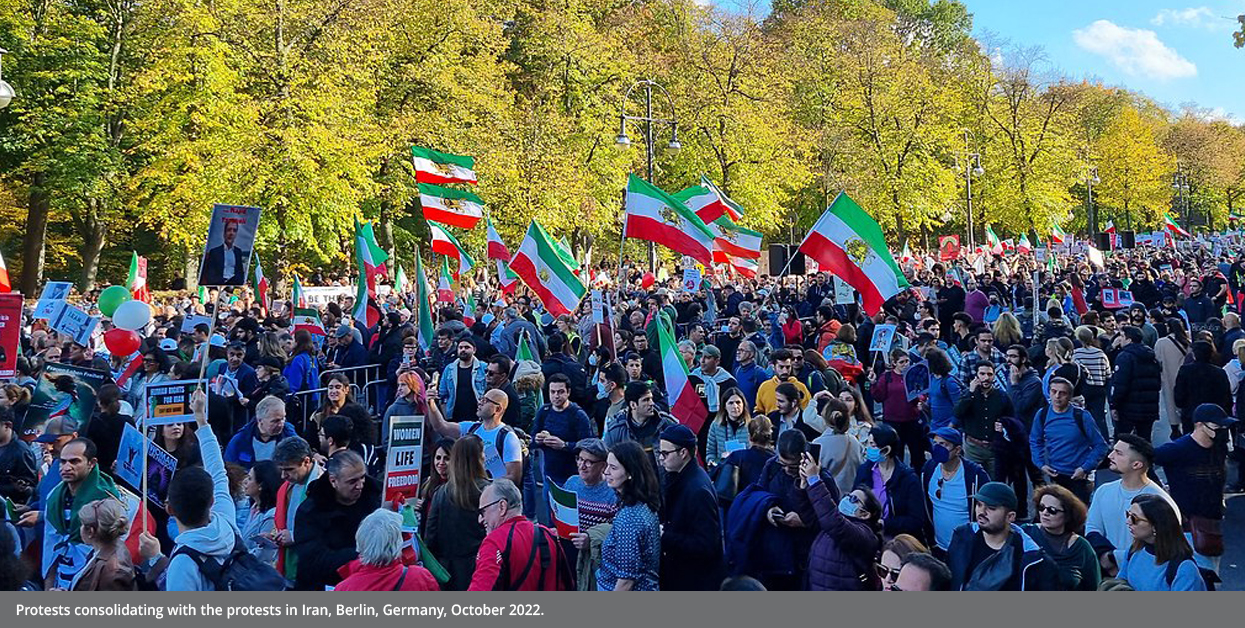
Compared to previous protests that took place under Reformist President Hassan Rouhani, who ruled from 2013 to2021, these protests did not have this popular and temporal momentum, despite his reign witnessing the peak of maximum sanctions, an increase in fuel prices, and the Covid-19 crisis.
Iranian Supreme Leader Ali Khamenei sent a message of rapprochement between the two currents via composing of the Expediency Council, which was announced in September 2022. Observers noted that the list of 31 members is balanced in its representation between the two main currents, which may be reflected in the state of political harmony between both currents, as the Council is considered a supreme advisory body with the authority to settle disputes between the authorities sometimes.
Iran’s main institutions, such as the Expediency Council, the Assembly of Experts, the Guardian of the Constitution, the Iranian army, and the Revolutionary Guards, are all mobilized to push their candidate to succeed Khamenei, an 83-year-old leader with health problems. Since President Ebrahim Raisi is likely to take over the position of supreme leader or oversee the engineering of the next one, conservative fundamentalists may disrupt Raisi’s government because, though conservative, Raisi is also a revolutionary with a long history of fighting corruption.
Fourth: Protests at Youth Points
These protests were attended by youths, the most numerous and vital of the total population, from universities and girls’ schools. Protests at some universities left people injured or killed.
This is not the first time that universities have joined the protest movement, but what distinguishes the current protests is that the university movement is not just a symbolic participation, rather, an actual one that prompted some university administrations to adopt online education amid student unions announcing a strike against attending lectures in protest against the storming of the campus by security services, the arrest of students, and the violent dispersal of student gatherings.
Fifth: Labor and Service Workers Protests
The scales of the demonstrations have fueled a network of protests among labor and service workers who are protesting the poor overall conditions. For example, workers in fuel sales centers, steel production facilities, and several labor unions have organized protests,
The Iranian Teachers’ Trade Associations also declared a limited strike to denounce the “suppression and killing of Iranian students.”.
The parties calling for these protests insist on not attributing them to the large protest of a political nature since their demands are related to either service or solidarity with the victims of the protests. However, the increase in groups participating in these protests is augmenting the political protest in their continuity, and vice versa, as new groups will join the protests demanding their rights or objecting to their lack of rights.
Sixth: Easing Security Repression
Security agencies around the world are pursuing different strategies to contain protests, ranging from soft security to violent repression with arms. Due to international and domestic considerations, Iran’s security establishment may have been forced to use less violent means this time in dealing with protesters. Internationally speaking, Tehran is more committed than ever to exhibit an image commensurate with its goal of returning to the international community, while seeking to avoid giving European negotiators an excuse to pressure it for humanitarian files, especially since sanctions are already imposed on Iran related to human rights issues.
Domestically, the Reformist movement monitors the government’s handling of the protests to record political gains based on the government’s failure to contain the protests as well as the assault on the sanctity of citizens’ lives.
In practice, while Iran has witnessed continuous protests for years, the harsh security approach often followed by the authorities did not meet any success nor has it reduced the intensity of these protests. In fact, the harsh handling only increases the protesters’ insistence on their demands.
Because of these international, domestic, and practical factors (), the security approach to quell the protests may be less severe, but there seems to be a tendency to practice a violent security approach, the features of which were evident in Supreme Leader Khamenei’s vow to confront “rebels and hired people” and praise the role of the Basij, one of the five forces of the Islamic Revolutionary Guard Corps, that is always tasked with suppressing protests by force.
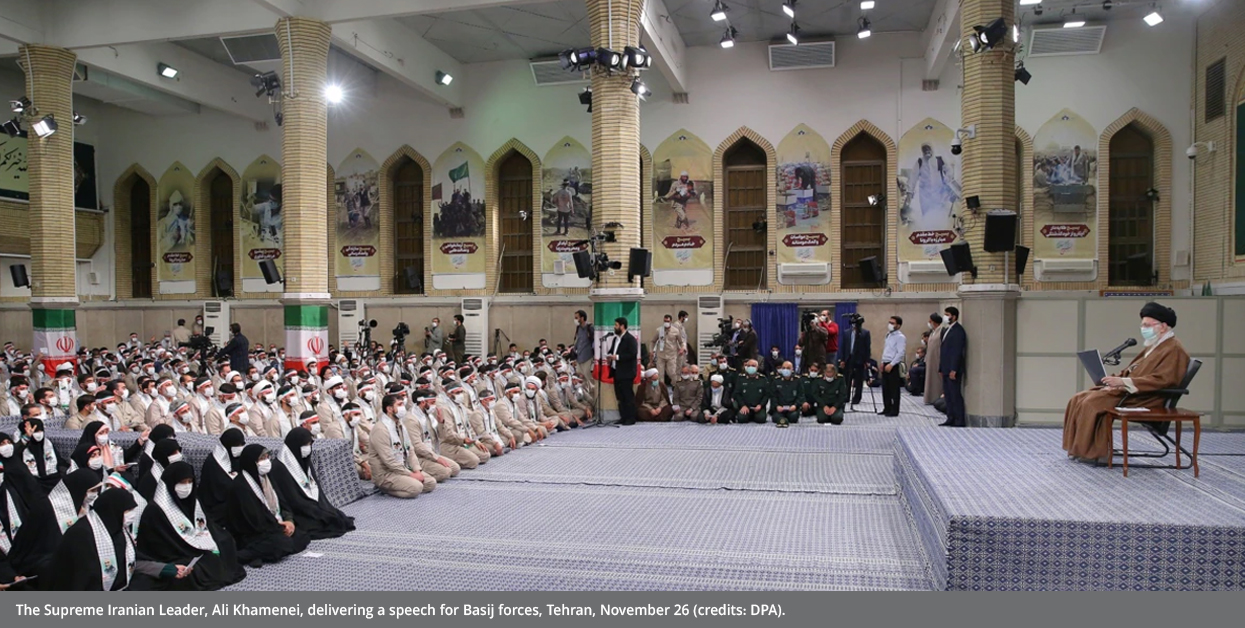
Even though the security approach is still less violent, the intensity and scope of the protests increased the death toll from 304 deaths in the 2019 protests estimated by Amnesty International to 402 deaths estimated by Iranian human rights centers.
Seventh: Persian-Speaking Media Outlets Abroad and Programs to Overcome the Banning
The past few years witnessed an increase in the number of Persian-speaking media outlets and news channels playing a vital role by broadcasting from outside Iran extensive and ongoing coverage of the protests, such as the Persian-language BBC, Deutsche Welle Farsi, Radio France Internationale, Sadai America (Voice of America), and Iran International.
Tehran has imposed sanctions on many of these media institutions, especially the Iran International Network and the Persian-speaking BBC, on charges related to incitement to violence and extremism, according to the Iranian Foreign Ministry. On October 26, 2022, similar sanctions were imposed on eight media outlets in the European Union, including Deutsche Welle Farsi, as well as 12 individuals, including the editor-in-chief of Bild, a German newspaper.
However, there are several ways to reach those outlets’ audio-visual and readable broadcasts inside Iran despite the blocking or sanctions through easy-to-use and common techniques to bypass the blocking imposed by the Iranian authorities on the Internet, as they allow a local Internet called the Halal Internet that is subject to the control of the security services concerned with security and morals.
According to a report published by the International Institute for Iranian Studies (Rasaneh) in October 2022 entitled “Breaching Iran’s Cyber Curtain,” an increasing number of Iranians are using programs and applications to evade prohibition and censorship, such as The Onion Router (TOR) application used around the world to access the dark web. According to the institute, the wave of protests in 2022 has made the use of means of bypassing the block common.
In addition to these means, the company Starlink, founded by American entrepreneur Elon Musk, announced the start of providing satellite internet inside Iran. Media sources revealed the smuggling of a limited number of equipment needed to receive satellite internet signals across the border with the Kurdistan region.
Since this technology is still new and requires expensive devices and equipment whose signals can be monitored by the Iranian authorities, it has not achieved as effective coverage as it did in Ukraine, where the satellite internet provided an effective network for communications and telecommunication despite Russian interference and jamming.
In the face of these media outlets overcoming the blockage, the official media is no longer the owner of the exclusive narrative. Due to the intensity of its spread in this tide of protest, the non-state media has played a vital role in perpetuating incitement and broadcasting a discourse that moves emotions and ideas towards the continuity of the momentum of the protests.
Eighth: Stalled Nuclear Negotiations and the Supply of Military Drones to Russia
The Ukrainian crisis did not succeed in creating favorable conditions for Iranian petroleum and gas to flow in global markets through legitimate ports. Tehran insisted on demands that included ending the International Atomic Energy Agency’s investigation into the finding of uranium traces at three old and undeclared nuclear sites.
At the height of the stalemate in the nuclear negotiations, reports were circulating about a Russian-Iranian military defense cooperation in which Tehran provided drones to the Russian army in an open defiance of the negotiation spirit. Three European countries—Great Britain, France, and Germany—in the P5+1 deemed this a negative signal of the nature of Tehran’s interaction with them, especially since these countries are making efforts to mediate between the United States and Iran.
Only four days later, the European Union approved two resolutions in October 2022 to impose sanctions on Iranian entities and officials, including leaders of the morality police and the Iranian army, for the deadly suppression of protests and the supply of drones to Russia.
In late October 2022, the German Foreign Ministry announced that the European Union was studying the classification of the Revolutionary Guards as a terrorist organization. The issuance of this statement by the German Foreign Ministry is different from French, British or Belgian statements. For example, as Germany is considered the most understanding of the Iranian position—or so it appears—and the most affected among European countries by the energy crisis.
In November 2022, French President Emmanuel Macron met with Iranian women activists, praising the “revolution they lead,” which the Iranian Foreign Ministry assessed as “a flagrant violation of France’s international obligations in the fight against terrorism and violence.”
This meeting came after it was revealed that the Iranian authorities arrested two French citizens before the start of the protests. Iranian Interior Minister Ahmed Vahidi claimed that Iran arrested “members of the French intelligence agency,” which is not the first time that European citizens have been arrested at a sensitive political time on charges related to security breach. This practice is described as “hostage diplomacy.”
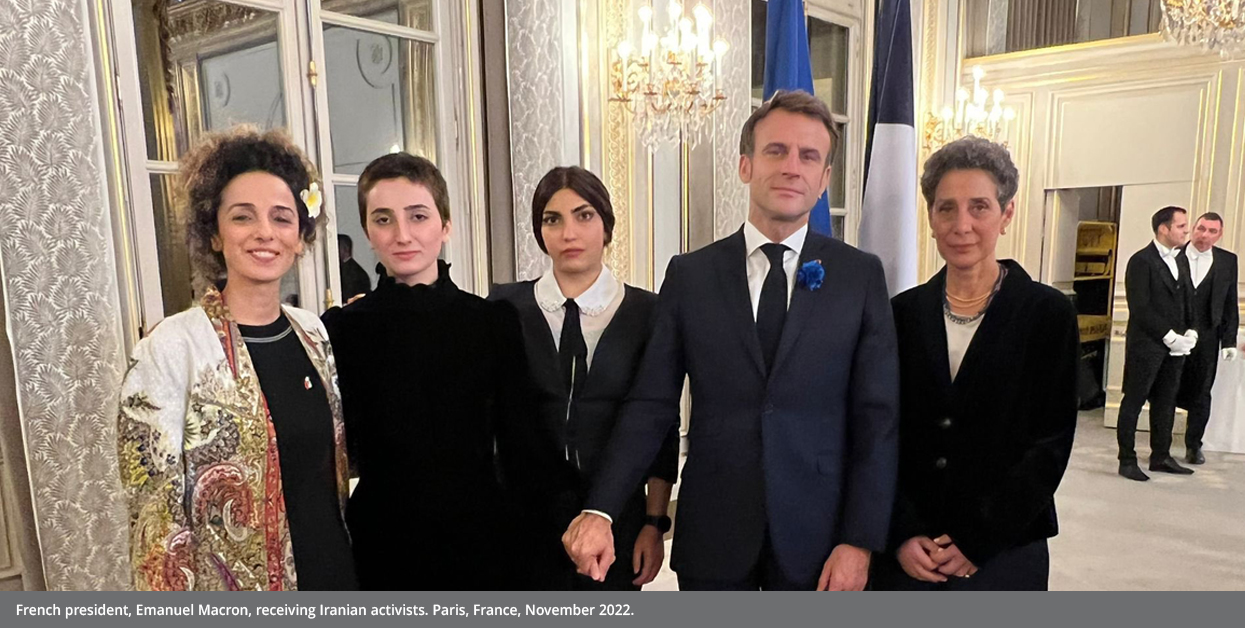
United States support for the protests appears to be more explicit and stronger than its European counterpart. U.S. President Joe Biden’s enthusiasm in saying “We’re gonna free Iran” may reflect a personal position but not a new political approach, as the White House explained in a later statement. However, this enthusiasm is shared by leaders in U.S. institutions.
Because Iran is preparing for a transitional phase for its regional and international interactions, the protests may find sources of support and leadership from abroad to pressure Tehran’s negotiating position and soften its rejection, which may be one of the factors prolonging the protests.
Ninth: Iranian Accusations of Foreign Interference
Iran’s accusatory statements of support from Israel and some countries are many, such as a tweet by Iranian Foreign Minister Hossein Amir-Abdollahian in which he accused “multiple security agencies, Israel and some Western politicians” of making plans to dismantle Iran through civil war.
Such public statements may be directed at the Iranian public to confront the protesters and arouse the emotions of Conservatives who feel hesitant to engage in the protests, as it is clear that the protests have not yet reached their end at the time this paper is published in early December 2022. Such protests may witness those hesitant persons’ minds and hearts catching the enthusiasm to participate.
Regardless of Iran’s escalating rhetoric regarding foreign support for the protests, its impact should not objectively be exaggerated in the face of local causes. Acknowledging foreign support may give impetus to the continuation of the protests, especially if it is carried out in a coordinated and unified manner among the various countries that aspire to employ the protests as pressure in negotiating and bargaining with Tehran.
Tenth: Minorities Concentration at Border Points
There are ethnic groups of Arabs, Ahwazi, Kurds, Baluchistan, and Azeri in Iran concentrated at border points. Arabs are spread along the coasts of the Persian Gulf. The Kurds are in contact with the northwestern border with Iraqi Kurdistan. While Baluchistan spread in contact with their ethnic extensions in Afghanistan and Pakistan. And the Azeri minority reside in the far north along the Caspian Sea and the border with Azerbaijan, which Tehran establishes as an advanced base for the Mossad to spy and interfere in Iranian affairs.
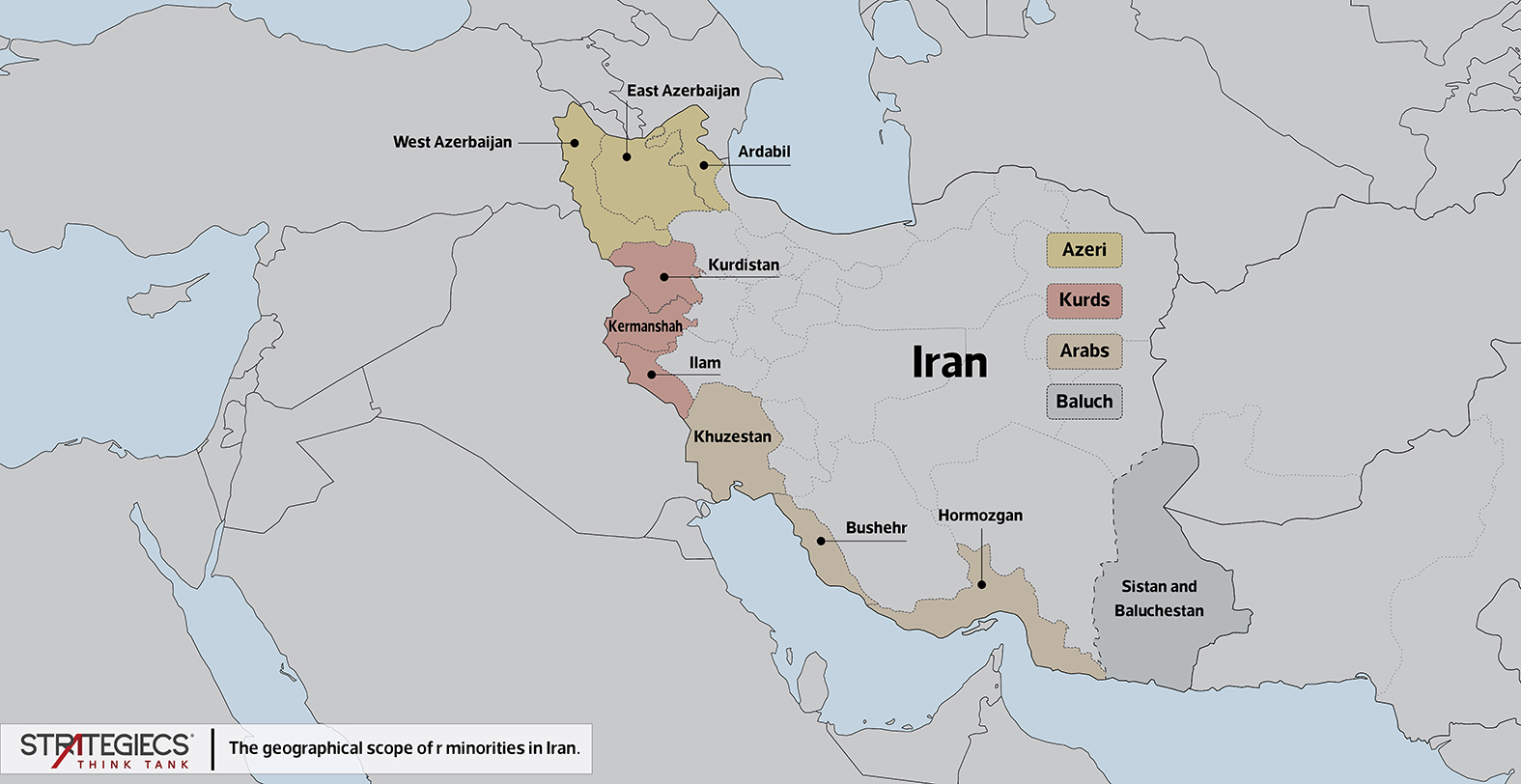 Thus, it can be said that Iran’s borders are inhabited by citizens of non-Shiite Persian ethnic nationalities. These minorities assume that they are marginalized by the center in Tehran, creating a sense of grievance along with a problem of citizenship and identity among the minority inhabitants.
Thus, it can be said that Iran’s borders are inhabited by citizens of non-Shiite Persian ethnic nationalities. These minorities assume that they are marginalized by the center in Tehran, creating a sense of grievance along with a problem of citizenship and identity among the minority inhabitants.
This has led to the crystallization of an ideal environment for intervention and perpetuation of protests, especially since Iran’s borders with Afghanistan and Pakistan are already unstable due to the fragile security situation in these countries, while Kurdistan is in a state of continuous security clash with Tehran.
Eleventh: The Rising Geopolitical Importance of Baluchistan in Regional And International Connectivity Projects
The province of Baluchistan overlooks the Arabian Sea that accesses the Strait of Hormuz and is close to the port of Gwadar in Pakistan, one of the main ports in China’s Belt and Road Initiative. If political stability and societal security were achieved along the Iran-Pakistan coast, regional and international projects on energy connectivity to Central Asia and possibly other destinations could be activated.
Some experts believe that former Pakistani Prime Minister Imran Khan’s interest in developing economic ties with China—specifically through the Gwadar port and the Belt and Road Initiative—was one of the main factors that led to his government’s loss of confidence in the legislature and plunging the country into a political crisis.
As for Iranian Baluchistan, it is a chronic point of protest and the most intense in terms of the number of demonstrators and victims. According to news reports, Iranian forces killed more than 50 unarmed protesters and wounded 270 in Baluchistan in one day.
In the midst of domestic and international turmoil in the Middle East, competition for cross-border connectivity projects has long been one of the deep issues discussed when addressing the causes of the crisis and ways to resolve it.
Iran is preparing for its influence from the coasts of the Arabian Sea to the coasts of the Mediterranean Sea to be a path for international trade that excludes the economic interests of another axis of countries and brings geopolitical benefit to China. This is why it is unlikely that Iran will implement its international trade path without being seriously obstructed, thus the continuation of the protests may be one of the tools of obstruction.
In conclusion, the unprecedented expansion of the protests demonstrates the fragility of stability. Iran’s immunity to fluctuations is at its lowest stage, as reflected in the continuation of the protests. Such protests are likely to continue unless the state makes a concession to calm the growing anger.
However, the psychology of the Iranian leadership and the logic of its political administration tend to not make concessions. The Iranian leadership considers such concessions a sign of weakness by virtue of its ideological composition.
It is possible that foreign and local parties exploited this feature to embroil the country in a spiral of protests that drains the Iranian effort and distracts Tehran’s priorities in a transitional phase, where crucial files are addressed, such as nuclear negotiations, regional talks, and the succession of the supreme leader.
The continuity of the protests may—in addition to local objective factors related to societal, economic, and political conditions—be part of a strategic score-settling with the previous phase before moving to a new phase in which Tehran would realize that force has limits, and that its use has consequences and repercussions on the domestic interior.
It makes no sense to call on Tehran to change its behavior unless its behavior has a price for domestic stability. Only then will the Conservative movement in foreign policy be convinced that the continuity of the state is in doubt if the existing approach continues to be based on an interventionist foreign policy that is confrontational with regional and international powers.
Therefore, the continuity of the protests may be a realistic motive for an Iranian review that leads to radical changes in the state of freedoms and foreign policy. Some may see these two areas as separate. Remember, however, that the countries with central rule tend to address the emotions of society through propaganda, marketing their foreign policy in order to urge the society to endure hardships for the purpose of achieving the goals of this policy. In the event of expanding the margin of freedoms or modifying the style of foreign policy, the approach of moderation will prevail de facto.
Keep in touch
In-depth analyses delivered weekly.
